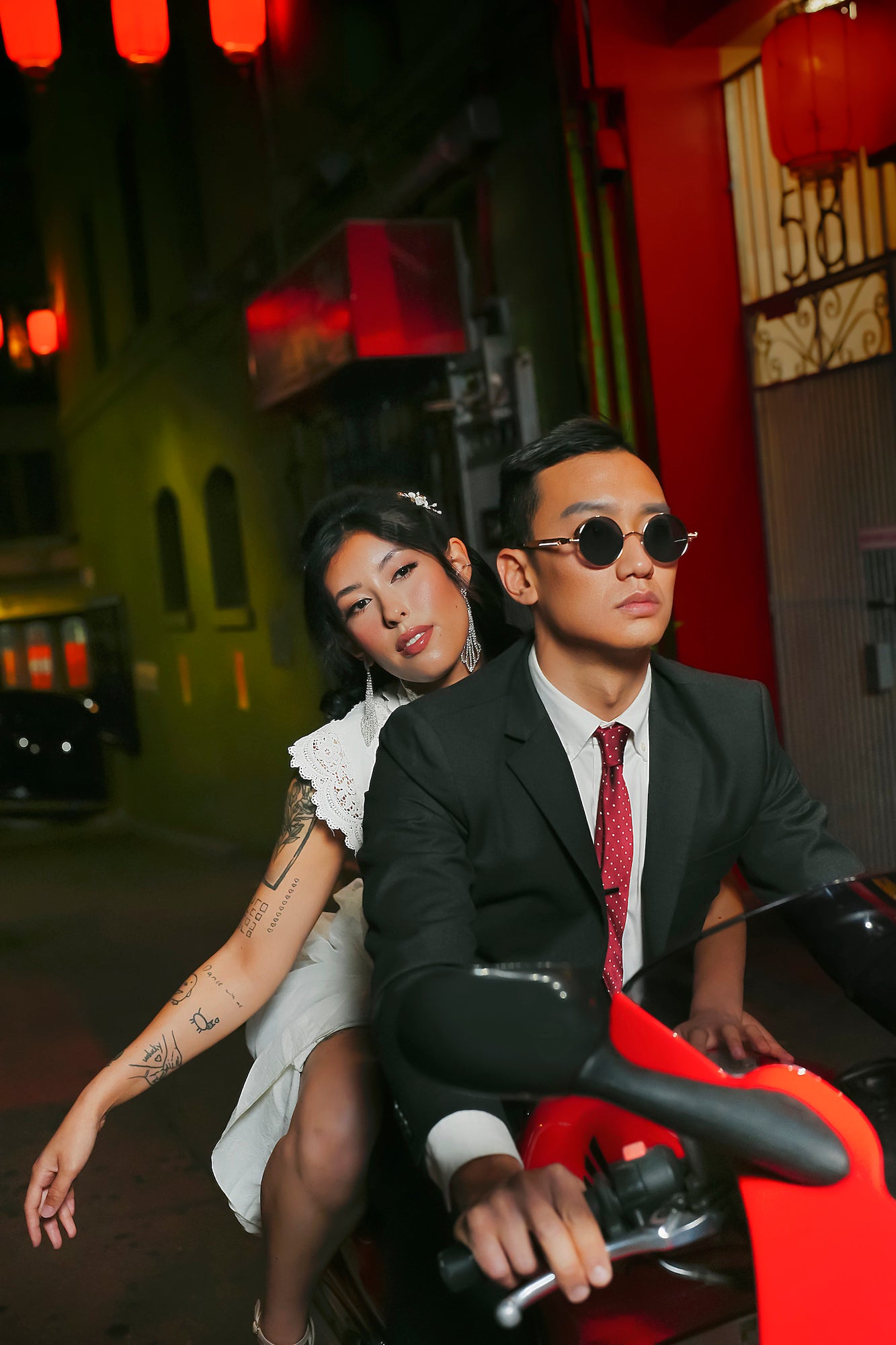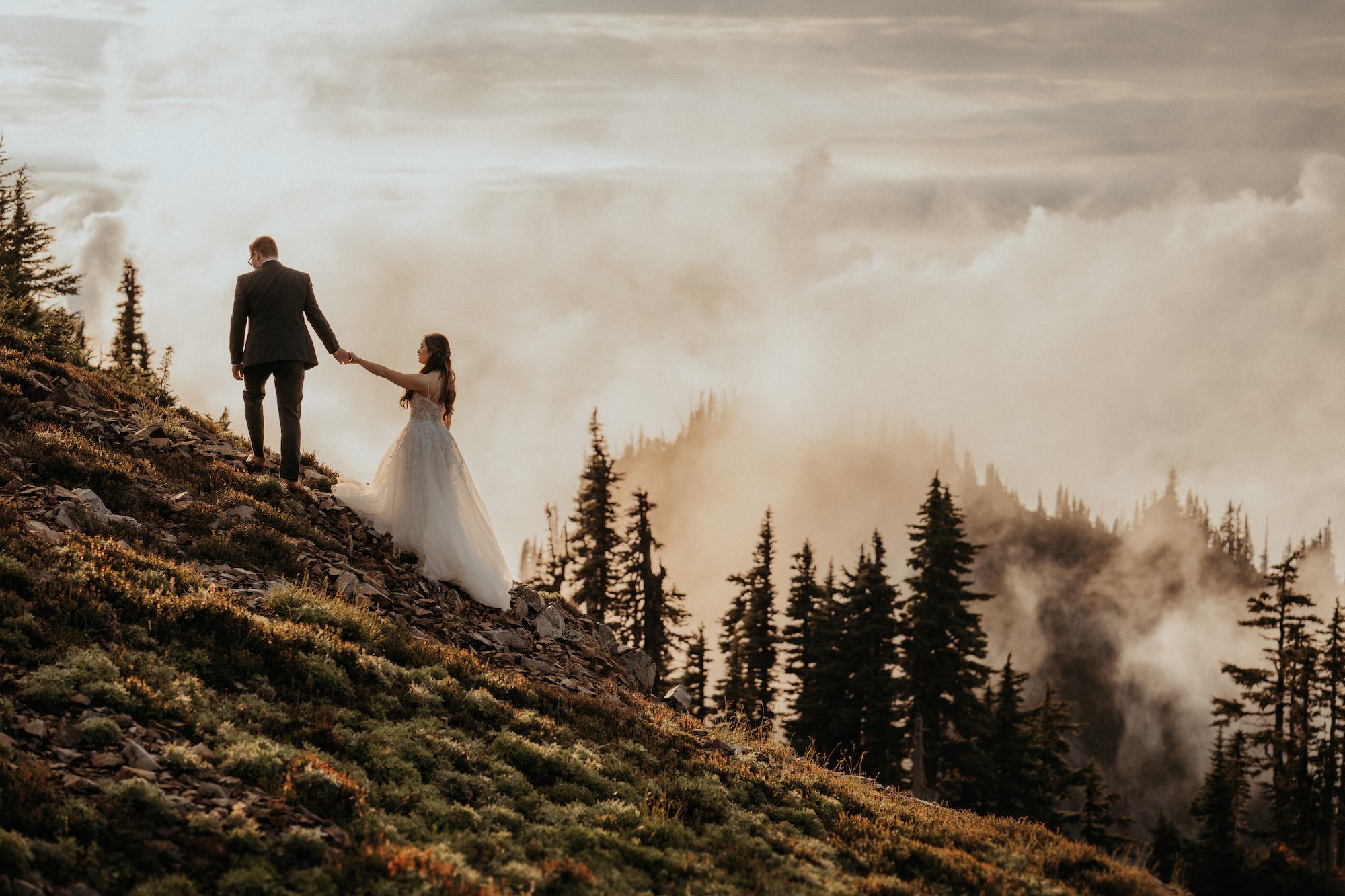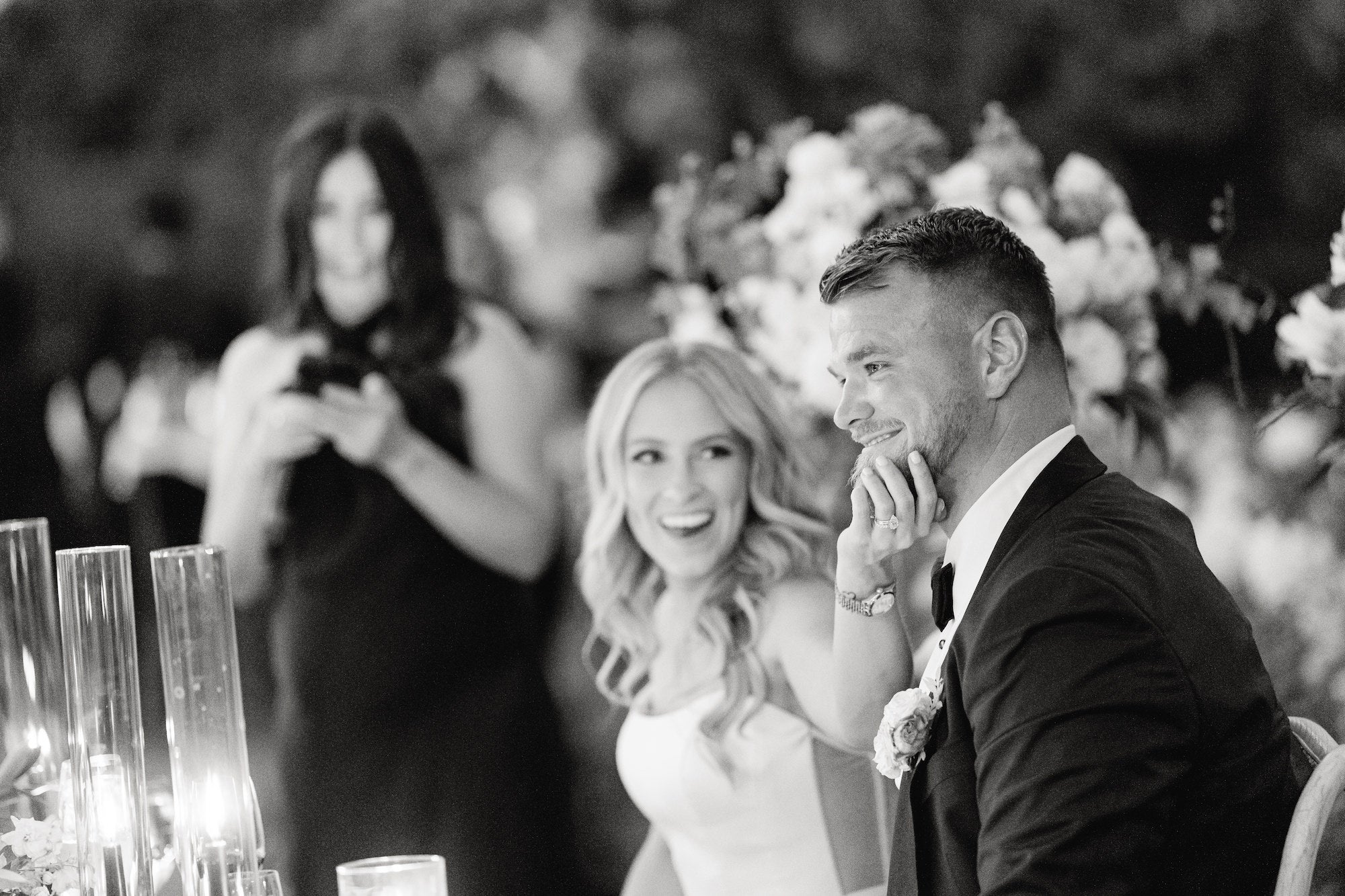Photographing weddings is a rewarding yet challenging venture that requires both technical skill and a creative eye. As a new wedding phtoographer there's a lot of pressure to so take a breath, remind yourself that you got this and fortify yourself with these pro tips on preparation and equipment for capturing beautiful moments that last a lifetime. There's nothing as rewarding as seeing the look of joy in the wedding party's eyes when you deliver stunning results that immortalize their most special day.

Photo by Henry Tieu. Sony Alpha 7 IV. Sony 85mm f/1.4 G Master II.
1. Understand The Timeline
Before the big day, sit down with the couple to discuss their wedding timeline. Knowing the schedule in detail allows you to anticipate key moments like the first kiss, cake cutting and special dances. Familiarize yourself with the venue layout and lighting conditions during different parts of the day. This preparation helps you plan your shots and be in the right place at the right time.
2. Scout The Location
If you aren’t familiar with the wedding venue, you should make time to scout it in advance for potential photo spots. Look for unique features, beautiful landscapes and interesting architectural elements that can serve as striking backdrops. This pre-visit will also help you understand the lighting conditions you’ll be working with, whether natural or artificial, so you can strategize your approach to each scene.
3. Bring The Right Gear
The right gear can significantly impact your ability to capture stunning wedding photos. As you plan out your gear for the day, think of all of the different focal lengths you want to cover. Sony Alpha cameras provide the high-quality results and compact design that wedding photographers need, making them a great choice for beginners entering wedding photography. Below are some options, but any in the Alpha series will be great for a beginner getting into the business.
The Sony Alpha 7 IV is a favorite among wedding photographers and an excellent option for someone starting out. It’s a great all-rounder that delivers excellent image quality and dynamic range, crucial for capturing intricate details in both brightly lit and shadowed areas. Wedding pro Sara France calls an Sony Alpha 7 IV a pro workhorse. "For wedding photographers, this camera is a workhorse and is all you will usually need for great value. All of the photographers on my team use this camera model exclusively. The focus, flexible screen, and quality of the image, matched with a perfect RAW file size for weddings, makes this an ideal wedding camera. The compact, lightweight bodies are such an asset on these long wedding days. This line of work is tough on my back and shoulders, so the lighter gear can be, the better. Great battery life, ultra fast autofocus and dual card slots makes this camera a reliable companion.” (see more about the all gear Sara France uses HERE)

If you want ultra-high resolution, try out the Sony Alpha 7R series, like the most recent Sony Alpha 7R V. This camera excels in delivering incredibly detailed images, allowing for extensive cropping and large-format prints. The advanced autofocus system and wide dynamic range are perfect for capturing intricate scenes and expressions, making it a great choice for photographers who prioritize detail and clarity.
If speed and precision are what you’re after, think about the Sony Alpha 9 III. Wedding pro Zabrina Deng uses the Alpha 9 III extensively. "I love capturing both action and static shots in fashion photography. Utilizing the camera's global shutter camera, I can use any brand of speed light to freeze the subjects in motion." The photo below was taken at night in San Francisco's Chinatown, as the couple, Wilson and Sarah rode a motorcycle through the narrow alleys. "[The global shutter] was crucial for capturing the dynamic movement as they sped through the alley, allowing me to shoot at a much higher shutter speed than traditional cameras with rolling shutters, which are limited to 1/200-sec."

A versatile zoom lens is a staple in many wedding photographers' kits. Options like the Sony 12-24mm f/2.8 G Master, Sony 24-70mm f/2.8 G Master II or Sony 70-200mm f/2.8 G Master II can all come into play during the wedding day depending on your style. Zooms allow you to change perspective on the fly so you stay nimble for everything from tight portraits wide party scenes.
A Sony 85mm prime lens is an excellent option and a go-to focal length for most wedding and portrait photographers. Wedding and elopement photographer Henry Tieu (@henrysdiary) approaches capturing every moment during a couple’s special day with intention. To help him with this approach, an 85mm prime lens is a staple in his kit, specifically the Sony 85mm f/1.4 G Master II. “I love an 85mm for wedding work because it’s perfect for portraits,” he explains. “It doesn’t create that distortion on my subjects, so it gives me the most natural looking faces that you can get out of a lens.” Read more in Sony 85mm f/1.4 G Master II: The New Must-Have For This Wedding Pro.

Photo by Henry Tieu. Sony Alpha 7 IV. Sony 85mm f/1.4 G Master II. 1/1000-sec., f/2.8, ISO 200
For a wider perspective that captures more of the overall scene, the Sony 35mm f/1.4 G Master lens is the choice of many leading wedding pros. It’s perfect for environmental portraits and capturing the ambiance of the venue. Its wide aperture allows for stunning low-light performance and creative depth of field, making it versatile for various shooting scenarios throughout the wedding day.
Check out the links below to get a look inside the kits of the world's best wedding pros kits.
- What's In My Bag: The Top Tools For A Luxury Wedding Photographer
- How This Wedding Pro Uses His Camera & Lenses To Create Different Looks On Location
- What’s In My Bag: A Wedding Photographer’s Essentials For Capturing Couples In Love
- What’s In My Bag: See This High-End Pro's Kit For Wedding & Portrait Photography
- What’s In My Bag: A High-Res, High-Speed Kit For Fashion & Wedding Photography
- What’s In My Bag: A Minimal Camera & Lens Kit For Weddings & More
4. Communication Is Key
Clear communication with the couple is crucial to understanding their vision and expectations. Inquire about specific shots they desire, such as family portraits or candid moments with friends. Discuss their preferred style – whether it's traditional, documentary, or a mix – and ensure you are aligned with their vision. This collaboration will help you deliver a collection of photos that authentically reflects their special day.
5. Practice Your Portrait Skills
Portraits are a significant part of wedding photography, capturing the couple and their loved ones in their best light. Practice your portrait skills, focusing on posing, composition, and capturing natural expressions. Developing a comfortable rapport with your subjects will help put them at ease, resulting in more genuine and relaxed portraits.
6. Master Low-Light Photography
Weddings often involve low-light situations, such as dimly lit churches or evening receptions. Mastering low-light photography techniques is essential. Adjust your camera settings to a higher ISO, wider aperture, and slower shutter speed to accommodate the lighting conditions. If necessary, use an external flash or additional lighting to illuminate your subjects without overpowering the scene.

Photo by Sara France. Sony Alpha 1. Sony 135mm f/1.8 G Master. 1/160-sec., f/1.8, ISO 2000
7. Be Prepared & Organized
Preparation extends beyond camera settings and scouting locations. Ensure you have all necessary equipment, including extra batteries, memory cards, lenses, and cleaning supplies. Pack everything in an organized manner to access gear quickly when needed. Having a checklist can help ensure nothing is left behind and that you're ready for anything the day might throw your way.
Because wedding photography clients can largely come from referrals, you really need to take the time to prepare and have a polished approach on the wedding day. Fumbling with your gear and appearing not ready for the day is a bad look and lacks the professional quality people expect in a wedding photographer for their special day.
8. Capture The Little Details
While the big moments are important, the small details add depth and context to the wedding story. Photograph details such as the rings, flowers, table settings, and other decorations. These images provide a comprehensive narrative of the wedding day and can be cherished by the couple for years to come.

Photo by Henry Tieu. Sony Alpha 7 IV. Sony 85mm f/1.4 G Master II.
9. Stay Calm & Adaptable
Weddings can be unpredictable, and things might not always go as planned. Staying calm and adaptable is crucial. If the weather takes a turn or the timeline shifts, be prepared to adjust your plans and find new creative solutions. Remaining composed will help you manage the day smoothly and maintain the couple's confidence in your abilities.
10. Edit With Care
Post-processing is the final step in delivering beautiful wedding photos. You can use editing software to enhance your images, adjusting exposure, contrast and color balance as needed. Maintain a consistent editing style across the collection to ensure a cohesive look, and most importantly – remember to backup all files before and after editing to prevent data loss.
By following these tips and utilizing the versatile features and compact design of your Sony Alpha camera, you can confidently step into the world of wedding photography. With preparation, practice and a passion for capturing love stories, you’ll develop your unique style and provide couples with timeless images of their most cherished moments. Look around AlphaUniverse.com for more wedding photography content to help you succeed.



